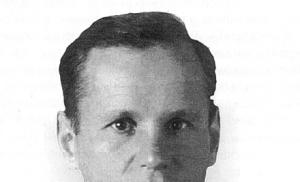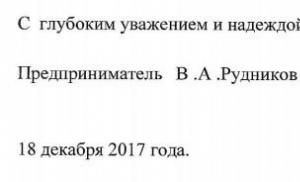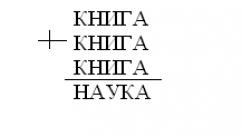Woman after caesarean section. When does milk come in after a caesarean section? What to do to get milk after caesarean
Is it possible to breast-feeding after caesarean section? How to organize natural feeding when mother and baby are separated? What are the nuances of the formation of lactation? What is important for a mother to know when preparing for surgery? Features of breastfeeding cesareans in the reviews of consultants on breastfeeding.
There is an opinion that it is much more difficult for a woman who has survived a caesarean section to establish natural feeding. This statement contains only a fraction of the truth. “The number of problems that a woman faces after a cesarean is no more than that of a woman giving birth naturally, - comments breastfeeding consultant Natalya Razakhatskaya. - Women face similar difficulties after difficult and long labor who are in intensive care."
It is much more difficult to break social foundations, psychological uncertainty. They are backed by numbers. In 2014, researchers at Peking University conducted a study to find out which mother-baby pairs are most likely to be bottle-fed. A survey of nearly half a million women and analysis of data collected from 1993 to 2006 found that a planned caesarean section doubled the chance artificial feeding child. Whereas after natural childbirth women decide to feed with a mixture much less frequently.

The formation of lactation after unnatural childbirth
It has been scientifically proven that the level of milk produced by a woman is affected exclusively by the frequency of applying the baby to the breast. And the sooner the baby is attached to it, the better.
WHO insists on early breastfeeding. According to some data, the first hour of life is optimal, according to others - an interval of half an hour after childbirth. At this time, a child born naturally shows sucking activity. However, things are a little different for Caesars.
Passage through the birth canal forces the child to adapt to new living conditions. Babies born by caesarean are deprived of this opportunity. Their birth causes a "failure" of the genetic program. But the body still adapts quickly enough. Lethargy, the absence of sucking urges, which are observed in cesareans immediately after birth, disappear within one to two hours. Accordingly, for the first time they can be applied to the mother's breast at this time.
“According to international practice, the first attachment to the breast of children, born by caesarean section is carried out an hour after birth, - says Marina Mayorskaya, consultant on breastfeeding. - If the sucking activity of the baby is low or absent, it is necessary to apply it to each urge, "squeak", until he begins to suck actively.
The nuances of the first application to the chest of a cesarean.
- Depends on anesthesia. If sparing epidural anesthesia was used during the operation, it is possible to apply immediately after childbirth. If general anesthesia - you should wait for the end of the anesthetic.
- Six hours are important. As world practice shows, during the first six hours, cesareans begin to show sucking activity. Compliance with this time interval will help the development of lactation.
- Only chest. It is her, and not a pacifier, a pacifier, a bun, that the child should taste for the first time. The use of breast substitutes after birth reduces the chances of full breastfeeding.
- Comfortable postures. The optimal position of feeding from under the arm, which eliminates pressure on the woman's stomach.
In medical facilities that allow women to stay together after caesarean section with children, the percentage of normal lactation formation is high. If the caesarean is planned, try to agree in advance with the medical staff about the possibility of your joint stay with the child in the same room.

Inability to apply early
Unfortunately, the global practice of early caesarean breastfeeding is rarely observed in Russia. Various circumstances contribute to this. The woman and the baby are in different wards, the mother is prescribed antibiotics. Is it possible to breastfeed after caesarean in these situations?
Stay in intensive care
Traditionally, the mother stays in the intensive care unit for one to three days. This excludes the possibility of natural feeding due to the absence of a child nearby. The tactics of a woman's behavior should be as follows.
- Demand to bring the baby to you as soon as possible. The International Convention on the Rights of the Child obliges medical personnel to organize a joint stay of the mother and the newborn, even in the intensive care unit. The exception is situations when a woman or a baby needs to use an artificial respiration apparatus. Demand, negotiate, ask, connect relatives. How earlier child will be near your chest, so less problems with the organization of natural feeding awaits you.
- Forbid supplementary feeding on the first day.“On the first day after giving birth, a woman produces about ten milliliters of colostrum. In the second - no more than thirty. Of course, colostrum is extremely important for the baby, but its absence does not doom him to the pangs of hunger, says lactation consultant Marina Mayorova. - Significantly more harm will be brought to the child by the introduction of complementary foods from a bottle, which is practiced in our maternity hospitals, than a day without food at all. But it will be impossible to fulfill your demand without the control of one of the relatives.
- Agree on spoon feeding. If the mother is in intensive care for a long time or the doctor insists on supplementary feeding, ask the husband or grandmother to supplement the child with a spoon, a syringe without a needle, a special drinker. The absence of objects that would allow the baby to realize the sucking reflex will help to establish breastfeeding in the future.
- Express yourself. Coming breast milk observed on the third day after birth. Caesarean section prolongs the time interval: milk comes on the fourth, fifth, even ninth day. The more actively you organize pumping, the sooner you can start breastfeeding. Express your breasts with your hands or with a breast pump every two hours for ten minutes. From midnight to six in the morning, take a break for sleep. Even if there is little or nothing coming out of your breast when you express, keep doing it. Your task now is not to express milk as much as possible, but to give your body a signal that it is already needed.
With the observance of this tactic of actions, the correct formation of lactation is ensured.

Taking antibiotics
Prescribing antibiotics after caesarean is a standard procedure. It is designed to protect a woman from complications. If there were no difficulties during the operations, the mother may be prescribed antibiotics compatible with breastfeeding.
There is no need to be afraid to breastfeed if you are prescribed drugs of acceptable groups (check with your doctor). Their secretion into breast milk is either completely absent or so minimal that they are not able to cause any harm to the baby.
If the mother is prescribed antibiotics that prevent breastfeeding, the tactics of action should be almost the same as with a separate stay.
- Introduce supplements from a spoon. Typically, the timing of antibiotics is 5-7 days. During this time, the baby will be formula fed. If the baby is in the same room as you, you can feed him with a spoon or syringe yourself.
- Express yourself. Use a breast pump or hand expressing technique. This will allow lactation to reach normal levels by the time the baby can be applied to the breast. And the problem of what to eat for a baby when lactation after a cesarean section has not been established will not affect you.
Clinical breast pumps are commonly used in maternity hospitals. These are powerful, effective devices that make it much easier for an inexperienced mother to express. Ask the medical staff to bring the pump to your room.

Lack of milk
When the difficulties of resuscitation are already behind, and the baby is allowed to be applied to the breast, it may turn out that there is practically no milk in it. This situation is likely even if the woman has been pumping regularly. It is caused by several reasons.
- Pumping is not as productive as breastfeeding. However, it creates the necessary "minimum" stimulation, which triggers the production of milk.
- The arrival of milk is possible within nine days after a caesarean section. A mother's small amount of natural food does not necessarily require temporary supplementation.
“According to the WHO, La Leche League organization, the introduction of supplementary feeding should be carried out, depending on the condition of the child,” says lactation consultant Marina Mayorova. “The wet diaper test can tell if a baby needs extra food.”
In the first day after birth, the child should write only twice. Over the next two days, the number of urination will be the same. From the third day of life, urination should be at least four, and the sixth - at least six. This means that the child does not need supplementary feeding. And while maintaining urination at the indicated level, it can exist without additional food, except for mother's milk in a minimum amount, up to ten days.

Supplementation is necessary in the following situations.
- The baby was born premature. Such crumbs also have a sucking reflex, but often they are too weak to suck milk from the breast in sufficient volume. It is ideal to supplement with your own milk, which will require regular pumping.
- Your baby is missing your milk. If the “wet diaper” test showed insufficient food for the baby, it is necessary to introduce supplementary feeding. A child who does not receive nutrition in the right amount is weakened, exhausted, nervous under the breast, which prevents him from eating and stimulating lactation.
The introduction of supplementary feeding requires the mother to follow several rules.
- The way is important. Even if in the maternity hospital the baby was fed from a bottle, being at home or with the baby in the same room, use only a spoon, pipette, syringe.
- The sequence is important. Give supplements only after the baby is attached to the breast. Finish feeding with one more application.
- Volume matters. Regardless of how much milk your mammary glands produce, the amount of supplementary food should not exceed thirty milliliters per feeding during the first ten days of the baby's life.
- The transition to natural feeding is important. Do a wet diaper test every three days. If there is more urination, reduce the amount of formula in the supplement. Once your milk supply is sufficient, artificial formulas should be discarded entirely.
“The baby was bottle-trained, and now he doesn’t want to take the breast at all” - young mothers often turn to breastfeeding consultants with such a problem. But even if the first subject that the baby met after birth was the nipple, it is possible to restore lactation in full and transfer it to natural feeding! Use a relactation technique that requires immediate nipple rejection and frequent attachment of the baby to the breast.
The question of how to establish breastfeeding after a cesarean section is fraught with many nuances. But according to lactation consultants, it is not as difficult as it is commonly believed. Correct sequence the actions of the mother will allow to establish lactation at the required level already on the fifth or seventh day after childbirth. And with the early introduction of supplementary feeding - within two weeks.
If a mother is going to have a caesarean section, she usually worries about how she will continue with breastfeeding. There is a strong belief in our society that breastfeeding after a caesarean is much more difficult than after a conventional birth, there are more problems, milk is lost, etc. However, lactation consultants know that it is possible to establish breastfeeding even with an adopted child, therefore organizing feeding after caesarean is no more difficult than organizing feeding after any other birth in a maternity hospital with separate content. Of course, like any other non-standard situation, feeding after cesarean will first have its own characteristics. However, if you are ready for this, all this will be temporary measures, which can be gradually abandoned. So, what are the features of feeding after a caesarean section.
Problem with first application
Successful breastfeeding requires a properly organized first breastfeeding within the first hour (and according to some documents it is recommended even in the first 30 minutes) after birth, but how can this be done after a caesarean section?
Let's start with the fact that properly organized attachment to the breast, that is, a full-fledged imprinting in maternity hospitals, is generally rare. Full-fledged imprinting includes not only early attachment to the breast, but also the implementation of this act at the moment of the highest sucking activity of the child, which very much depends on how the birth proceeded and very rarely occurs in the first 30 minutes of his life! With full attachment, the child sucks only one breast for 30-40 minutes, or even longer, after which it must be transferred to another breast, which will suck the same amount. Obviously, in most Russian maternity hospitals, such application usually occurs several hours and sometimes several days after birth!
After a caesarean section, during the first hour after birth, the sucking activity of the child is reduced or absent altogether, therefore, world practice recommends applying such a child to the breast 1 hour after birth. If the child does not show sufficient sucking activity, he is offered a breast for every squeak until he wants to suck properly. Scientific studies have shown that children who are not immediately attached to the breast retain high sucking activity during the first 6 hours after birth, therefore, in the case of cesarean, it is enough that attachment to the breast occurs during these 6 hours.
In any case, this attachment occurs after 1 hour or a little later, it is very important that the mother's breast was the first object to enter the baby's mouth. To do this, you should exclude any supplementary feeding and supplementation of the baby until the mother feeds him for at least 1 hour in a row! But it already depends on how the mother prepares for this process, what she will negotiate with the doctors, what she will ask her relatives to follow. For example, in the case of paid childbirth and a separate ward, it is possible to agree that dad or grandmother will watch through the glass all the procedures that take place in the nursery and that the child will be given to the ward as soon as all the necessary procedures have been completed. You can also agree in advance on such a ward, where the child and mother are not separated at all.
Thus, the problem with the first application is greatly exaggerated and organizing this situation competently after a cesarean is just as realistic as after other births in a maternity hospital.
The problem with the intensive care unit
After a caesarean, a woman stays in the intensive care unit for 1 to 3 days, so even in those maternity hospitals where joint maintenance is accepted, she is separated from her child. How about breastfeeding?
Actually this is the most the main problem, which, unfortunately, is associated exclusively with the rules for organizing assistance in maternity hospitals in Russia. There is no such problem anywhere in the world, the child is always with his mother, even in the postoperative ward, with the exception of the need for mechanical breathing for the mother or for the child. This is required by the International Convention on the Rights of the Child. And until our mothers begin to demand that their primordial maternal rights be respected, no one will do this for them! So ask, demand, negotiate while there is time for this, that is, before childbirth.
You can agree on different things.
For example, you can arrange that while you are in the recovery room, the child was not fed. I assure you the absence of 10 ml of colostrum, which he sucks out on the first day and 30 ml on the second, does not doom the child to hunger pangs at all! However, if your trustee is not near the child, compliance with the agreement can hardly be verified.
If the mother is immediately in her room, we can agree that father or grandmother taking care of the baby, until my mother can do it. They may also spoon feed baby if the doctor insists on supplementation.
If, nevertheless, you are separated, you should not lose heart. Accept the fact that you have to retrain the child, and enjoy the moments of relaxation. True, you can only rest for the first day. On the second day, it is necessary to organize pumping both mammary glands, every 2 hours, excluding the night break from 24.00 to 6.00. It is better to start pumping by stimulating the nipples with the palm of your hand, then express for about 5 minutes, regardless of how much is released from there. The rest of the time, rest.
If a mother remembers to pump and is ready to retrain her baby to suck properly as soon as she meets him, success is guaranteed!
Thus, even if the mother is separated from the child in the first days, then everything can be adjusted, and if you correctly agree with the medical staff in advance, the separation time can be greatly reduced!
Problem with lack of milk
After a caesarean section, many mothers experience a slow arrival of milk, it can even come on the 9th day, supplementary feeding is inevitable, how can you arrange feeding later?
Of course, if the mother's milk comes so late, the baby will have to be supplemented for some time. However, first, far not every woman after caesarean has a slow flow of milk. And the child in the first days is designed only for colostrum, and his women produce in different ways. Therefore, do not rush to draw conclusions. Do not pay attention to how much the child loses in weight, because this loss does not depend on the method of feeding at all. And do not rush to feed baby until you do the so-called "wet diaper test". Count the number of times your child urinates.
AT first 3 days enough of everything 2 , the next three third to sixth, Total 4 , beginning from the sixth they must be at least 6 .
These are the lower limits, there can be much more urination, but according to the WHO and the International Dairy League, up to the 10th day of life, a child can safely exist without supplementary feeding, subject to these standards. And by the 10th day, milk usually appears.
Secondly, sometimes when breastfeeding supplementary feeding for initial stage sometimes even necessary! If we feed a premature, weakened baby, in the first days he will definitely need supplementary feeding, because he simply does not have the strength to suck out all the necessary portion! True, here supplementary feeding is organized with expressed milk, but it is thanks to supplementary feeding that the child begins to grow, he has the strength to suck better and better, and the need for supplementary feeding gradually disappears. It is also worth treating supplementary feeding with a slow appearance of milk. Milk will come when the baby will stimulate the breast enough by sucking. A child who does not receive supplementary food is either very nervous at the breast, or quickly falls asleep exhausted. Supplementing will allow him to feel more calm, and at the same time he will have enough strength for long enough stimulation of the breast by sucking. As soon as the milk comes in, supplementary feeding can be abandoned.
Thirdly, supplementary feeding itself is not as dangerous as the way it is given! For breastfeeding, a bottle with a nipple is the most harmful and useless item. If the mother is going to breastfeed the baby, then pacifier supplementation is unacceptable! It is the mother who should decide how to feed the child. In our maternity hospitals, unfortunately, it is not customary to supplement the children in other ways in the children's departments. Of course, if the child is brought to the mother according to the regime, then she will have to put up with it. However, as soon as the baby stays with the mother permanently, pacifier supplementation should be discontinued! Mom or relatives helping her can supplement the child, observing the following rules:
- for feeding, a small spoon, pipette, medical syringe, penicillin vial, etc. is used, but not a bottle with a nipple;
- supplementation is given strictly according to the regimen, offering breasts before and after supplementary feeding;
- in the first 10 days, the child is not given more than 30 ml of supplementary feeding at a time;
- supplementary feeding is given only in the amount that increases the number of urination to normal.
Thus, even with a slow arrival of milk, and the need for supplementary feeding, the mother will be able to breastfeed if she competently organizes supplementary feeding.
Problem with child retraining
A child who has been improperly supplemented with a bottle and large portions usually gets used to the regimen, does not breastfeed too often, and also does not latch on properly. If he is offered a breast more often, he simply sleeps, and if he is not allowed to grab the breast in the usual wrong position, he cries. Is it possible to retrain such a small child?
Not only possible, but necessary. Feeding in accordance with your biological rhythms, feeding in the correct position, is not only necessary for good lactation in the mother, it is primarily necessary for the child himself. It is in the baby's genetics that this method of sucking is laid. All its cells are waiting for the necessary signals. As soon as the behavior of the mother begins to meet the genetic expectations of the child, his hereditary program is turned on. The child's body begins to produce endorphins - hormones of joy and happiness, only with frequent feeding in the correct position. Therefore, even when retraining, even when crying, the child does not get stress!
To offer your baby a breast more often, it is not at all necessary to wake him up, you just need to watch his sleep and offer him to take the breast after 1.5-2 hours from the start of falling asleep, at the moment when he starts to make smacking movements in his sleep!
It usually takes a few days for your baby to learn to breastfeed in a new way. But only with competent advice and appropriate support. Mom herself, as practice shows, cannot cope with this, no matter how much good books And she didn't read the right articles! Neither videos nor colorful posters help! Breastfeeding is an art passed down from mother to mother! Only a mother who has experienced such relearning can teach this to another mother. And the easiest way to find such a mother is to contact lactation consultants.
Thus, no matter what mistakes you make in the first days after childbirth, if you seek help in a timely manner, all of them can be overcome!
Of course, when breastfeeding a child after a cesarean, there are other problems, but they are no different from the problems of mothers who gave birth in a maternity hospital in a different way, and therefore they are also solved.
And for skeptics, I want to add that among our consultants there are enough women who not only managed to breastfeed a child up to 2 years after cesarean, but now they are successfully teaching other mothers this!
Mayorskaya M. B.
experienced lactation consultant
The amount of milk does not depend on the method of delivery, but on your perseverance and desire to establish lactation.
Today, caesarean sections are not always done under general anesthesia. The doctor may perform the operation using epidural, or spinal, anesthesia. You will be fully conscious and able to attach the baby to the breast for another operating table. If the baby needs a special examination by a neonatologist, then the first feeding will occur a little later, after a few hours. In any case, you will establish lactation and be able to feed the baby as much as you want.
When does milk appear after a caesarean section?
The time of the birth of a child depends largely on hormones. They are your main helpers. Oxytocin is responsible for contractions, promotes the arrival of milk. During natural childbirth, impulses are transmitted to the brain, and it “tells” the body what to do.
But with a caesarean section, the chain invented by nature is interrupted. The body does not immediately understand that the child has already been born and it is time to feed him. Lactation improves faster if the operation is performed when labor has already begun. Then milk appears on 3-4 days, as after natural childbirth. But a planned caesarean is done on the day chosen by the doctor. Therefore, be patient: you will have to wait a bit until the hormones "orient" and the first droplets of milk are formed (you will notice them 5-9 days after you start putting the baby to the breast).
Breastfeeding after caesarean section. Will have to wait
Breast milk - best food for the crumbs. And for a child who was born by caesarean section, it is especially useful. He was born quickly and did not go all the way provided by nature. So, he could not properly prepare for a new life. In addition, the child may be a little lethargic and sleepy due to the medications you have been given. He needs to gain strength. This is best done at the mother's breast. But do not expect that the baby will immediately begin to suck and the first feeding will be one hundred percent successful. Now he just needs to take a breast and be close to his mother.
Why is it important to breastfeed
Feeding is important not only for the baby, but also for you. Due to the fact that the baby will suckle the breast, the uterus will begin to return to its previous size faster. You won't have to administer drugs to reduce it (they are usually prescribed after a caesarean section). You and your child will do just fine.
How to improve lactation after caesarean section
The next day after the operation, you will be transferred from intensive care to a regular room. The child will be next to you. Feed him on demand. This is how you improve lactation.
In the early days, only colostrum will be excreted. A few drops are enough for a child to get enough.
Do not be discouraged if the doctor recommends that the child be placed in the pediatric ward for a while. The well-being of the crumbs largely depends on the mother's mood, so do not be sad. You have the opportunity to recover faster and prepare for feeding.
- The nurse will bring the baby every 3 hours. About 40 minutes before her arrival, drink unsweetened hot tea or dried fruit compote. Lactation will improve.
- Unroll your baby before feeding. From the touch of his delicate skin to your milk will be more.
- When the child "lunches", stroke him in the direction from the head to the legs. These feelings are pleasant and useful to him.
- The child cannot be with you yet? As soon as possible, start putting your baby to the breast, but in the meantime, bring your milk to him. Don't pump to the last drop. Well, if you collect 5 10 ml at a time. Fill the bottle every 2.5-3 hours and take it to the baby.
- After the operation, it will be more comfortable for you to breastfeed while lying on your side or sitting in a chair. Some people prefer to do it while sitting Turkish.
- It is better to give milk from a spoon or from a bottle with a nipple that resembles a mother's breast in shape. But do not forget that the baby must suck, taking it deep into his mouth. After each feeding or pumping that replaces it, check your breasts for lumps larger than a pea.
- When you are at home, discard the bottle. Attach the baby to the breast more often, and there will be a lot of milk.
We stimulate lactation
If you and your baby are not immediately together after the operation, you will still have enough milk. To do this, you need not only to express, but also to stimulate the nipples from time to time. Stroke them, lightly massage, pinch. Do it in a calm environment. And the milk will keep coming!
Why is breastfeeding after caesarean section so often causing a lot of problems and difficulties? The thing is that during natural childbirth, contractions indicate that the woman's body is ready to resolve the burden. This mechanism contributes to the increased production of oxytocin - a hormone to stimulate lactation. During surgery, at best, it begins to be produced much later, and at worst, it is not produced at all. So after such an operation, young mothers often have to deal with a variety of problems related to breastfeeding.
Causes of problems
In order to establish breastfeeding after a caesarean section and eliminate all the difficulties that arise, you need to understand the nature of their origin. If you do not determine the root cause and do not get rid of it, you will not be able to cope with the problem. If you cannot do this on your own, you need to seek help from doctors. Why are there problems with breastfeeding after this operation?
Long time no milk
The arrival of milk after a caesarean section and its timing depend on when exactly the operation was performed (before the onset of labor or after it). If the doctors managed to wait for contractions, then oxytocin will be produced in the required quantities, which means that the first colostrum in the breast of a young mother is formed immediately after childbirth.
But if planned operation could not be delayed until this point, the hormone is produced in the body much later. As practice shows, from 4 to 10 days. Therefore, after a caesarean section, milk appears most often in this period of time. This is fine. You just need to be patient and wait.
Baby refuses to breastfeed
The next problem is that the baby refuses to breastfeed. There may be several reasons for this development.
- The woman was given general anesthesia, she did not wake up immediately after the operation, so the moment of the first attachment of the newborn to the breast was delayed. The close, natural connection between the mother and her child is broken, he does not feel it when he is next to him several hours after his birth, or even days. In this regard, the regional is preferable.
- According to recent studies, in the body of a baby who was deprived of the natural passage of the birth canal, the production of some vital hormones and proteins is disrupted. Because of this, the child does not adapt well to environment, he is confused, elementary reflexes and skills are violated - including the sucking reflex.
- The operation involves the use of various drugs. Biologically active substances penetrate into breast milk after caesarean section, changing its taste. Because of this, the child may refuse to eat it.
- While the mother's lactation period is getting better, the newborn can be supplemented. As a result, after him, he does not want to take the breast.
Very often, breastfeeding after cesarean is not possible precisely because of the behavior of the child. It upsets the young mother, and worries and stress exacerbate the situation with lactation. As a result, the milk disappears and the baby remains an "artificial", although the woman had no problems. Sometimes it ends even more deplorably: if there is a lot of milk, mastitis may begin.
milk stasis
In the presence of a large number milk requires regular it . If breastfeeding after a cesarean section is absent (the child persistently refuses to eat), mastitis (the so-called inflammation of the female mammary glands) may begin due to fluid stagnation. In the absence of timely treatment, the disease can progress and eventually lead to the removal of the breast.
Not less often, a completely different phenomenon is observed - a lack of breast milk.
Little milk
If the baby has little milk (in such cases, he usually screams after feeding, pulls on an already empty chest, is naughty, refuses to sleep, rarely urinates), you need to understand the reason for this phenomenon in order to establish breastfeeding. They can also be quite a lot:
- violation of the regimen of breastfeeding;
- prematurity of the child;
- infectious disease of the mother;
- complications characteristic of caesarean section;
- irrational nutrition of a woman;
- severe mental trauma;
- taking medications such as camphor, hormonal and diuretics.
In order for the baby to receive a sufficient amount of milk, the root cause of its shortage must be eliminated. All these problems are completely solvable.
Soreness
Often, when milk comes in after a caesarean section (whether it happens on the first day after the operation or a week later), a woman may feel pain in the chest. They increase significantly when the baby begins to eat. Moreover, during feeding, the seam hurts or. This scares many young mothers who do not understand what is happening to them during this period.
In fact, all these phenomena are quite understandable. During the sucking reflex of the newborn, the nipple is stimulated, to which the body reacts with a hormonal explosion. It, in turn, provokes an intense contraction of the uterus. Despite the pain of this process, it contributes speedy recovery after operation.
Despite all the problems that arise, no matter how difficult they are, it is necessary to breastfeed after a cesarean section of a child. All these difficulties are surmountable. If you do not know how to deal with them yourself, seek the advice of a doctor. He will tell you a set of measures to restore lactation. Our helpful tips help you choose right direction on this important and responsible issue.
Good to know! According to scientific research, breastfeeding after caesarean section significantly reduces the rehabilitation period after surgery. The contraction of the uterus occurs faster, postpartum lochia ends at about the same time as during natural childbirth.
If there is no milk

Happy are those young mothers who do not have to wait long for the appearance of milk after a cesarean section. But what if the breast remains empty for several days after the operation?
As already mentioned, the culprit is the production of oxytocin, which can be delayed. What to do so that milk finally appears? Is it possible? If you do not give up and really want to feed the baby on your own, the dream will become a reality. Just follow the recommendations of pediatricians.
- Do whatever it takes to give up general anesthesia with a caesarean section, this will allow you to attach the newborn to the chest in the first moments of his life. This is the most powerful factor for the production of milk in your body.
- To check if there is milk after a caesarean section, express gently. All attempts end in nothing? Do not despair: stimulate the nipples with this procedure every two to three hours. It is not necessary to squeeze them strongly, but light massage movements will benefit the mammary glands.
- Even if there is no milk or very little milk, still put the baby to the breast. Let him try, suck, act up, but it is his sucking reflex that will awaken your body and make it produce that very oxytocin.
- If your hands hurt from pumping, get a breast pump - a useful household item for a young mother.
Usually problems with breastfeeding end in the interval from 4 to 10 days after cesarean. Lactation is getting better, thanks to coordinated and competent actions. If they did not help, all the deadlines have already passed, and you should not give up here. Think about why milk does not come in your case: after all, stress, worries, can be the culprit. In this case, the only way out is to find the strength to calm down for the sake of the child.
Is not a fact! At the subconscious level, it seems to many that milk may not be due to the small size of the breast. This is not so: often women with a magnificent bust have much less milk.
If the baby does not take the breast

It becomes even more offensive when breast milk appears almost immediately after a cesarean, but the baby flatly refuses to eat it. You can express it in liters, but the situation will not improve. What to do in this case? Actions will depend entirely on the reason for this behavior of the newborn.
- When choosing anesthesia for a caesarean section, give preference to regional anesthesia in order to establish a close connection with the child in the first moment of his life.
- The baby's sucking reflex is impaired: you will immediately notice this, as the baby will poke his nose and sponges into the chest, but he will not be able to grab the nipple or pull it. In this case, you will have to help him. Gently put your breast in his mouth and make forward movements with the nipple back and forth so that the baby understands what needs to be done.
- Try to take as few medications as possible. After a cesarean, this is very difficult to do, since it is almost impossible to live without painkillers in the early days. Then choose only those remedies that are not contraindicated during lactation.
- If the situation is such that you cannot feed the baby in the first days after cesarean (he or you are in the intensive care unit), you can always ask the medical staff to add your expressed breast milk to the mixture. Then when you meet, he will never refuse him.
Rarely, but still it happens that problems with breastfeeding after a cesarean section are associated with an incorrect posture. It turns out that the baby is simply uncomfortable to take the breast. Learn to sit and hold the baby correctly at this crucial moment - and the problem will be solved. There are many helpful videos that show you how to do this.
Keep in mind! Some pediatricians claim that the baby may not breastfeed just because the mother is upset and worried. Even after a caesarean, he is able to feel the state of his mother in such a way. So calm down, smile - and there will be no problems with milk after the operation.
If milk stasis

Caesarean section is never done just like that, at the whim of a woman. It is dictated by serious medical indications, when something threatens the life and health of a mother or baby. Because of this, after the operation, some of them may experience complications. They may be separated for some time due to being in the intensive care unit.
How, in such cases, to save breast milk after a cesarean section, to prevent it from disappearing or stagnation? The only thing correct solution- regular pumping. Preferably with a breast pump. If the moment was missed and stagnation of milk (mastitis) began, there would be nothing left but to undergo a course of treatment. It is very important to recognize the disease in time by the following symptoms:
- a sharp increase in temperature;
- chills;
- compaction and swelling in one of the mammary glands;
- general malaise;
- edema;
- excretion of pus.
The causative agent of mastitis is Staphylococcus aureus, which is treated with antibiotics (usually Cefazolin) and drugs aimed at reducing the stagnation of breast milk. If the disease is recognized in time, the baby will not be left without breastfeeding and will be able to continue it after the mother recovers.
Facts, facts... Mastitis after this operation in women is much more common than after natural childbirth. It can cause milk loss.
If there is not enough milk

If a woman does not have enough milk after a caesarean section, this problem easy to solve, since the causes of this phenomenon are completely removable. What can be done?
- Feed the baby on demand, not for hours. Be sure to organize nightly breastfeeding.
- Do not be afraid to supplement the baby with mixtures.
- After a caesarean section, check for infectious diseases and treat them.
- Eat right: drink more liquid, eat a lot of fresh fruits and vegetables, refuse smoked and pickled.
- Do not take camphor, hormonal and diuretics.
- Calm down internally, overcome complexes, fears and postpartum stress.
Often, it may seem to a young mother that her baby is not full, although in fact she has a lot of milk. To check if this is self-hypnosis, you need to monitor the number of urinations of the baby per day. Normally, it should be at least 6 times a day after a week after cesarean. If less, you really have problems with breastfeeding. If the same or even more - your fears are completely in vain.
Note to a young mother. Night milk contains many more vitamins, and its composition is fatter and healthier than day milk. So breastfeeding at night is simply necessary for the baby.
If it hurts

If breastfeeding causes pain in the mammary glands after a caesarean section, check for cracked nipples. In this case, sea buckthorn oil applications will be required.
If the pain is associated with intense contractions of the uterus and is localized in the lower abdomen, you will have to take painkillers that are allowed during lactation. These include Ketoprofen, Paracetamol, Naproxen, Ibuprofen, Ultracaine, Lidocaine. Analgin, Citramon, Codeine are categorically contraindicated.
In any case, when choosing a drug, you should consult a doctor.
Now you know what to do if there is no milk or the baby refuses to breastfeed after a caesarean section. Any problems associated with lactation during this period are solved. If you yourself cannot understand the root cause of the misfortune and cannot eliminate it, the district pediatrician or the doctor in the maternity hospital will always come to the rescue, while you have not yet been discharged.
Do not be afraid to consult, take advice, try various ways returning or increasing milk. If you want to normalize breastfeeding after a caesarean section, don't give up on your dream. As practice shows, some persistent mothers improve lactation even 3-4 months after the operation. Everything is real - the main thing is not to give up.
Today, the site for moms, the site decided to talk with you about when milk comes after a cesarean. After all, the problem of breastfeeding is of interest to everyone: those who had a natural birth, and those who went through a caesarean section. And if milk after EP, as a rule, comes “according to the scenario,” then what to do for those who have had a caesarean section is not entirely clear.
Process features
Lactation is a process that should begin after the body has started preparing for feeding the newborn after contractions. That is why, when a baby is born, they must be applied to the chest. Thus, milk begins to be produced by the mother, and the child has a sucking reflex.
It is definitely difficult to answer the question when milk comes after a cesarean section. It all depends on a number of factors. Among them - and individual characteristics the female body, and whether the caesarean section became planned or it was decided to do it urgently.
- So, a caesarean section can be, that is, carried out even before labor has begun. Then the milk does not appear as quickly as after the EP is normal. After all, the female body at the time of the birth of a child does not experience the same hormonal surge as in the natural process. And only on the fifth - tenth day milk appears.
- Sometimes a caesarean section is performed on an emergency basis, that is, unscheduled. Then usually the milk comes a little earlier. After all, labor activity is already in full swing. And food for the baby appears late, maybe on the same day, when compared with lactation after natural childbirth.
How to develop chest?
If nothing is done, then there is a chance that the milk will not come. What to do for those who do not have milk after a cesarean section, the doctor should tell.
It usually speeds up like this. The woman should start five minutes every 2 hours as soon as possible after she has recovered from the procedure.
Of course, a caesarean section is very, very complicated operation, and the site perfectly understands your condition after it, but if there is a desire to breastfeed the baby, then it is necessary to develop the breast.
Waiting for the milk to go and then you will put the baby to the breast is still not worth it. Even when in a standard ward after resuscitation, a young mother should teach her baby to suckle her breast. So he gets this skill, plus your body starts the process of producing oxytocin. It is this substance that is responsible for the secretion of milk. Yes, drop by drop at first.
From theory to reality: how to establish GW?
On the forums and in conversations with friends you can see different stories. It seems that mothers are even divided into “2 camps”: after natural childbirth and after cesarean, when milk appears, they usually rejoice not only caring mothers, but also their families, girlfriends, including pen pals, “members of the same forum”. And there are reasons for such joy! Because someone, even if there was a caesarean section, is breastfeeding his child on the same or the next day. And there are no problems with lactation. Others may struggle to breastfeed for 3 months!
The scheme of actions is quite complicated, but perhaps these recommendations will help some of you.
- May the baby always be there.
- As soon as you saw that he wants to eat, you should immediately apply to the chest.
- Is the milk coming out drop by drop or not at all? We shift to the other side.
Someone can do this for 2 hours, although if the baby is already starting to get nervous, act up, and if milk does not come at all, give baby food.
What problems can you face?
Someone thinks that in itself a caesarean section or a difficult test. But literally from the first days comes the realization that these are “only flowers”. Of course, some mothers, having tried it for a day or two, or maybe seeing that the milk did not come right away, do not suffer themselves and do not disturb the child, but feed them with infant formula. Others, having learned about the benefits of GW, are trying with all their might.
Physically, this is extremely difficult: 2-3 hours of sitting during each feeding affect:
- back numb,
- there are pains, a feeling that a stake was stuck in the back,
- shoulders and arms "fall off".
Therefore, those who have had a caesarean section and are trying to establish breastfeeding should choose a comfortable chair for feeding attempts, perhaps putting a pillow under their arm, and not keep the baby on weight. Or maybe you should feed lying down.
Psychological environment
It is important to understand that lactation is not only physiological process. The psychological atmosphere is also important. And it is clear that a mother who does not succeed in caring for a newborn,













